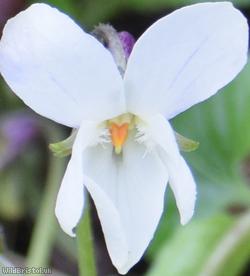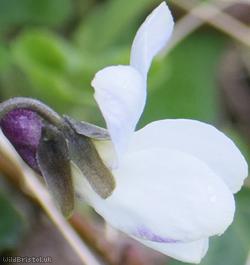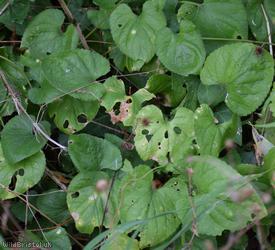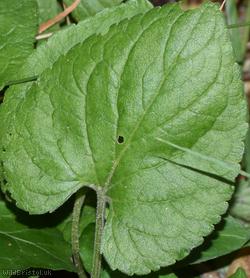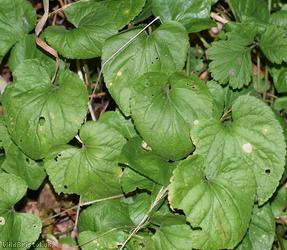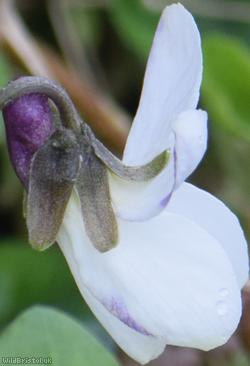Sweet Violet - Viola odorata var. dumetorum
Favourite Photos
Species Description
Violas of Britain and Ireland:
V. odorata var. dumetorum
Flowers with white corolla with almost invisible veins and dark spur, usually violet or purple; lateral petals with tuft of hairs towards inner end.
J. W. White:
The type violacea is very much less frequent in the vicinity of Bristol than the form alba. This has been accounted for by supposing that the blue violets have been largely dug up and transplanted into gardens, or hawked for sale in the streets, a fate which yearly befalls thousands of our ferns and spring flowers, not merely in this district but in the neighbourhood of all our large towns. Another suggestion on this point of respective frequency is that the form alba spreads more readily and is therefore found in greater abundance.
In this genus the showy spring flowers do not necessarily ripen seed: later in the season small apetalous flowers which never expand, and are self-fertilised, develop seed in abundance. The leaves do not attain their full size until the fruit ripens; thus specimens of this species and of V. hirta when in fruit present an appearance very different from that of others gathered when the spring flowers are expanded. Both states should be represented in the herbarium.
Mr. Murray's caution may well be repeated here: that our common "white violet" is quite distinct from the V. alba Besser; a plant which has not yet been found in Britain, although it is considered not unlikely to occur. It would be well to follow Dr. Neuman in calling our white sweet violet f. albiflora instead of alba, and so avoid possible confusion in that regard. I am told that the dumetorum of Rouy et Foucaud is the same plant.
Dr. C. E. Moss remarks that the large white violet of parts of Somerset seems to differ from the smaller white one of Cambridgeshire.
Flora of Gloucestershire:
Var. dumetorum (Jord.) Rouy et Fouc. (V. dumetorum Jord.; V. alba auct., non Besser.). 33, 34, White Sweet Violet. White-flowered forms of V. odorata are of frequent occurrence, but they are seldom correctly assigned to their proper varieties. In all these cases I have adhered strictly to the names assigned by Mrs Gregory to specimens she has seen. 3. Newent, Hb. Price. Dymock; Pauntley, much, F.M.D. 4. Tidenham Chase! Common in Newland district, Charles. 5. Bevington, B.E.C., 1935, 579. Frequent in lowland coastal areas, S. M. Walters. 6. Painswick to Stroud, Rev. W. Butt. Birdlip, B.E.C., 1918, 370. 7b. Bibury, very common, E. G. Baker. Fairford, Druce. Whelford! Kemble [v.-c. 7], Greenwood. Driffield cross-roads, Price. Hilcot, C.
